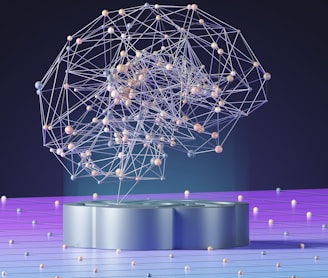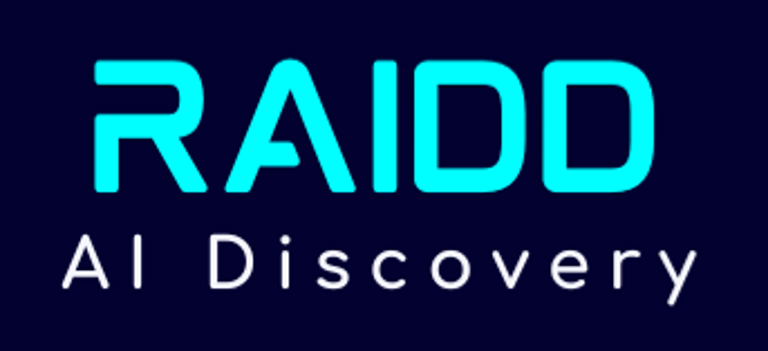The Ultimate Guide to Deep Learning for Business People
FOUNDATIONS


Deep learning helps computers learn to recognize patterns and make decisions, much like our brains. It's used in things like recognizing images and speech, and driving cars. Tools like TensorFlow, PyTorch, and Keras make it easier for developers to build these smart systems.
The Ultimate Guide to Deep Learning for Business People
Deep learning is a powerful part of artificial intelligence (AI) that's changing many industries. This guide will help you understand what deep learning is, how it works, popular methods, and the tools used to build deep learning models.
What is Deep Learning?
Deep learning is a type of machine learning where computers learn to recognize patterns and make decisions on their own, similar to how our brains work. It's used in things like recognizing images and speech, understanding language, and driving cars.
Why is Deep Learning Important?
Deep learning solves complex problems that were hard for earlier computer systems. It's improving healthcare with better diagnostics, finance with fraud detection, retail with customer service, and transportation with self-driving cars. With more data and computing power available, deep learning will continue to impact many industries.
How Does Deep Learning Work?
Deep learning models are built on neural networks, which have layers of connected nodes (like neurons in the brain). Here's a simple breakdown of how these layers function:
Input Layer: This is the first layer of the neural network and it receives the raw data, such as images, text, or sound. It simply passes this information to the next layer without doing any processing.
Hidden Layers: These are the layers between the input and output layers. They perform complex computations and transformations on the data. Each hidden layer consists of many nodes (neurons) that are connected to the neurons in the previous layer. The network learns by adjusting the weights of these connections based on the data it processes.
Output Layer: This is the final layer of the neural network, which produces the result of the model's computations, such as a classification (e.g., identifying an object in an image) or a prediction (e.g., forecasting future sales).
The Learning Process
The learning process in deep learning involves adjusting the weights of the connections between neurons to minimize the error in the model's predictions. This is done through a technique called backpropagation, where the model calculates the error of its predictions and then works backward through the network to adjust the weights, reducing the error step by step.
Key Concepts in Deep Learning
To better understand how deep learning models work, it's helpful to know a few key concepts:
Neurons: These are the basic units of computation in a neural network. Neurons receive input, perform calculations, and produce an output. The output from one neuron becomes the input for neurons in the next layer.
Activation Functions: These are mathematical functions applied to the output of each neuron. They introduce non-linearity into the model, allowing it to learn more complex patterns. Here are some common activation functions:
Sigmoid Function: Converts input values into a range between 0 and 1. Useful for binary classification tasks (e.g., yes/no decisions).
ReLU (Rectified Linear Unit): Returns the input value if it's positive; otherwise, it returns 0. This function helps the model learn and focus on positive signals in the data.
Tanh (Hyperbolic Tangent): Maps input values to a range between -1 and 1, providing a smooth gradient that helps in certain types of problems.
Popular Deep Learning Algorithms
Deep learning algorithms are methods for training neural networks. They define how the network learns from data and makes predictions. Here are some widely used algorithms:
Supervised Learning: This type of learning involves training the model on labeled data, where each input has a corresponding correct output. Two common types of neural networks used in supervised learning are:
Convolutional Neural Networks (CNNs): These are specialized for processing grid-like data, such as images. CNNs are great for image recognition tasks because they can automatically detect and learn patterns in the images, such as edges and textures.
Recurrent Neural Networks (RNNs): These are designed for sequential data, such as time series or natural language. RNNs can remember previous inputs in the sequence, making them suitable for tasks like language translation or speech recognition.
Unsupervised Learning: In this type of learning, the model is trained on data without labeled outputs. It tries to find patterns and relationships in the data on its own. Two popular unsupervised learning algorithms are:
Autoencoders: These neural networks learn to compress data into a smaller representation and then reconstruct it back. They are used for tasks like anomaly detection and data compression.
Generative Adversarial Networks (GANs): GANs consist of two networks, a generator and a discriminator, that compete with each other. The generator creates fake data, and the discriminator tries to distinguish it from real data. This adversarial process improves the generator's ability to create realistic data samples, useful in applications like creating realistic images or videos.
Reinforcement Learning: This involves training the model through a system of rewards and penalties. The model learns by interacting with an environment and receiving feedback based on its actions. A popular reinforcement learning algorithm is:
Deep Q-Networks (DQNs): These combine deep learning with reinforcement learning. They are used in scenarios where the model needs to make a series of decisions, such as in robotics, gaming, and autonomous driving.
Tools and Libraries for Deep Learning
Implementing deep learning models is easier with various frameworks and libraries. These tools provide pre-built functions and structures to streamline the development process. Here are some of the most popular ones:
TensorFlow: An open-source library developed by Google, TensorFlow supports building and deploying machine learning models. It includes tools like TensorBoard, which helps visualize the training process and understand how the model is performing.
PyTorch: Developed by Facebook, PyTorch is known for its dynamic computational graph, which makes it easier to modify and debug. It’s popular in research and industry for its flexibility and ease of use.
Keras: A high-level deep learning library written in Python, Keras provides a user-friendly interface to build and train neural networks. It runs on top of other engines like TensorFlow, simplifying the process of designing and testing models.
What are Libraries?
In the context of programming, a library is a collection of pre-written code that developers can use to perform common tasks, saving time and effort. For deep learning, libraries provide ready-made components for building and training neural networks, such as layers, activation functions, and optimization algorithms. By using these libraries, developers can focus on designing models rather than writing low-level code from scratch.
Conclusion
Deep learning is transforming AI by processing large amounts of data and making accurate predictions. Understanding its basics, methods, and tools can open up many opportunities in various industries. Dive into this exciting field and be part of the AI revolution!
